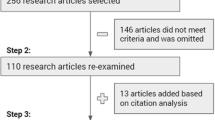Abstract
Whole life costing refers to the cost of ownership of a product from initial concept until eventual retirement with all cost categories taken into consideration. Traditionally software engineers have only been interested in the software development life cycle. This paper surveys research into whole life cost research in industry and finds that interest is greatest where the market is most competitive. In recent years the falling cost of computers has lead to increasing use of whole life cost in the marketing and advertising of IT products though there is very little published case study data available. Trends in other industries have shown that research will increase until more data is available and whole life costing is considered part of the normal design methodology. It will also be included in university computer science courses to train the professionals of the future in whole life cost techniques.
Similar content being viewed by others
References
Bradley, M. and Dawson, R. J. 1996. Gaining acceptance of software whole life cost by IT staff, Proc. First Psychology of Programming Interest Group Postgraduate Student Workshop, Group D Publications, Matlock.
Bradley, M., and Dawson, R. J. 1998a. An analysis of obsolescence risk in IT systems, Proc. Software Quality Management SQM '98, BCS, Amsterdam, pp. 209–217.
Bradley, M., and Dawson, R. J. 1998b. The ultimate quality metric, Proc. Empirical Assessment in Software Engineering EASE’ 98, University of Keele, pp. 161–165.
British Standards Institute. 1997. Guide to life cycle costing, BS5760: Part23: IEC 300-3-3.
Compac Computer Ltd. 1997. A guide to high availability servers, October.
Context. 1995. Cost of ownership of page printers.
Current Research in Great Britain. 1997. Physical sciences, 12th ed., London, Cartermill.
Dhillon, B. 1989. Life Cycle Costing, London, Gordon and Breach.
Dickinson, D. B. 1957. Economic evaluation of industrial power systems reliability, AIEEE Trans. Applications Ind., 76 Part II: 264–272.
Fenton N. E. 1992. Software metrics, London, Chapman and Hall.
Gartner Group. 1998. Total cost of ownership analysis.
Hewson, D. 1996. The mouse is turning into a pest on PCs, Sunday Times, April 14.
HMSO. 1996. Statement on the Defence Estimates, May.
Knezevic J. 1993. Reliability, maintainability and support—a probablistic approach. London, McGraw-Hill.
Labour Market Trends. 1998. Retail Prices—Section 6.2, January.
Microsoft. 1998. Microsoft briefing resource CD, Version 4, May.
Pearce R. 1995. Demonstration of a genetic algorithm for preliminary design, Internal Rolls-Royce report covering the preliminary design of a gas turbine engine.
Rand Corporation. 1994. The US Submarine Production Base—an analysis of cost, schedule and risk for selected force structures.
Sun Microsystems. 1998. Business essentials.
Zona Research Inc. 1996. Desktop clients: a cost of ownership study.
Author information
Authors and Affiliations
Rights and permissions
About this article
Cite this article
Bradley, M., Dawson, R. Whole Life Cost: The Future Trend in Software Development. Software Quality Journal 8, 121–131 (1999). https://doi.org/10.1023/A:1008904926757
Issue Date:
DOI: https://doi.org/10.1023/A:1008904926757




